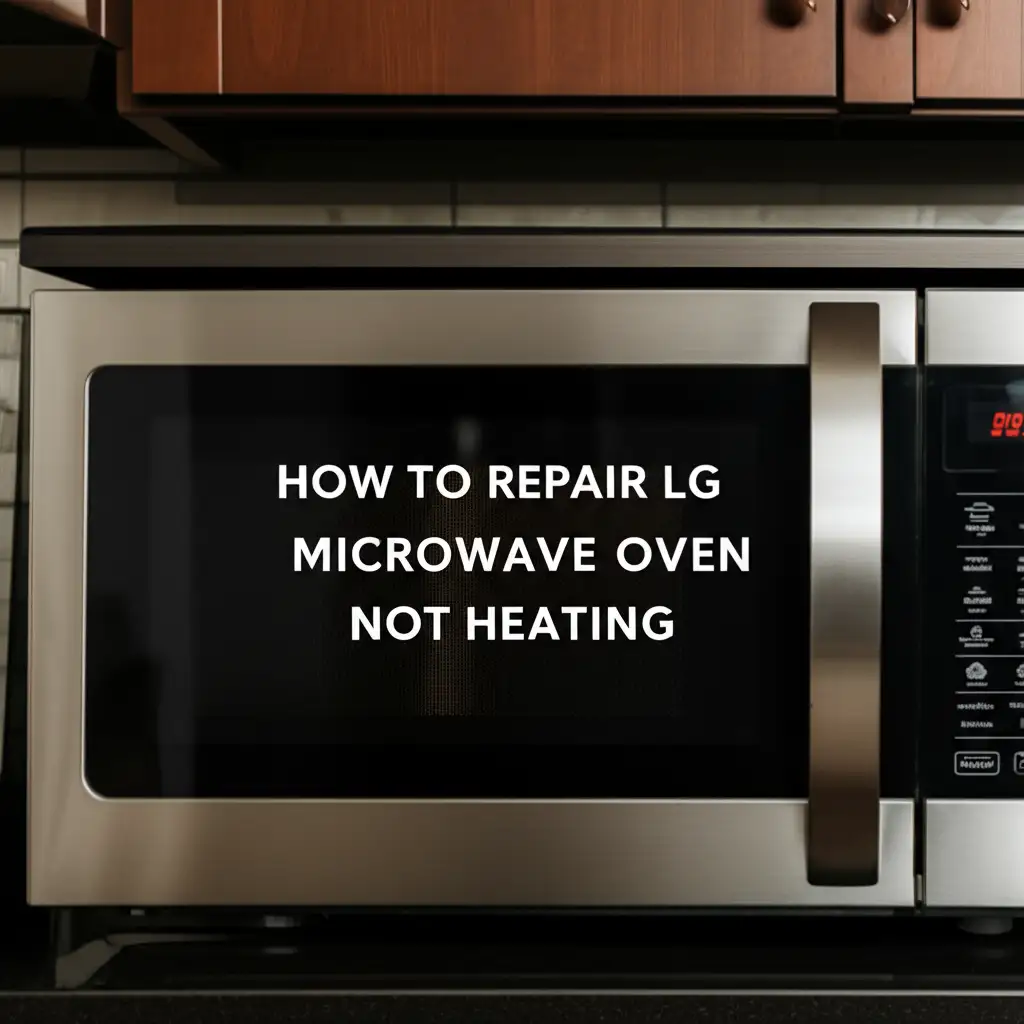· Todd Martin · Home Appliances · 20 min read
How Many Watts Does My GE Refrigerator Use

Understanding Your GE Refrigerator’s Wattage
Have you ever wondered about your GE refrigerator’s energy footprint? Knowing how many watts your GE refrigerator uses helps you understand your electricity bill. This information is key for managing household energy costs. It also helps you make smart choices about appliance efficiency.
I know many of us simply plug in our fridge and forget it. Yet, this essential appliance runs 24/7. It significantly contributes to your home’s total electricity use. This article will help you find your GE refrigerator’s typical wattage. I will also explain factors that influence its energy consumption. You will learn practical tips to reduce power usage and save money. Let’s explore how your GE refrigerator impacts your home’s energy picture.
Takeaway
- GE refrigerator wattage varies by model, age, and features, typically ranging from 100 to 800 watts for peak operation.
- Factors like ambient temperature, door openings, and maintenance affect actual energy use.
- Regular cleaning and proper settings can significantly reduce your GE refrigerator’s electricity consumption.
A typical GE refrigerator uses between 100 to 800 watts when its compressor runs, with an average running wattage closer to 150-200 watts. This power usage depends on the specific model, age, size, and features like ice makers or water dispensers. Energy Star certified models use less power.
What is Refrigerator Wattage and Why It Matters
Refrigerator wattage tells you how much electricity your appliance uses at any given moment. Watts measure the rate of power consumption. A higher wattage means the appliance draws more electricity. This directly impacts your electricity bill.
Understanding wattage helps you manage your home’s energy use. Refrigerators are always on. Their power consumption adds up over time. Knowing your GE refrigerator’s specific wattage helps you estimate its operating cost. This information is vital for budgeting household expenses. It also allows you to compare different appliance models for energy efficiency.
Most refrigerators do not use their peak wattage all the time. The compressor cycles on and off to maintain temperature. The average running wattage is usually lower than the maximum listed wattage. This cycling behavior is important for understanding true energy consumption. Pay attention to both peak and average wattage for a complete picture.
Kilowatt-hours (kWh) represent energy consumed over time. Your utility company bills you based on kWh used. To calculate kWh, you multiply wattage by hours of use and divide by 1000. For example, a 150-watt refrigerator running for 24 hours uses (150 * 24) / 1000 = 3.6 kWh per day. This calculation shows how watts translate into your monthly energy costs.
Typical Wattage for GE Refrigerator Models
GE manufactures a wide range of refrigerators. Each model type has different average wattage requirements. Newer models often use less energy than older ones. This is due to advancements in compressor technology and insulation.
A standard full-size GE refrigerator typically uses between 100 to 200 watts while the compressor runs. However, starting wattage, when the compressor first kicks on, can be higher, sometimes reaching 500-800 watts for a brief moment. This initial surge is normal. Let’s look at common GE refrigerator types.
GE French Door Refrigerators
GE French door refrigerators are popular for their large capacity and features. These models often include ice makers and water dispensers. These features increase overall power usage. A GE French door model might use 150-250 watts when actively cooling. Models with through-the-door ice and water may have slightly higher average consumption. For comparison, you can explore power usage for other brands, like how many watts does an LG French door refrigerator use.
GE Side-by-Side Refrigerators
GE side-by-side refrigerators also offer generous space and convenience. They usually come with an ice and water dispenser. Their wattage is similar to French door models. Expect these to consume between 140-230 watts during active cooling cycles. The constant availability of ice and chilled water means these components draw power regularly.
GE Top and Bottom Freezer Refrigerators
GE top-freezer and bottom-freezer models are often more energy-efficient. They have a simpler design with fewer features. A GE top-freezer refrigerator might use 100-180 watts when cooling. Bottom-freezer models are similar, perhaps 110-190 watts. Their lower wattage makes them a good choice for energy savings.
GE Compact and Mini Refrigerators
Small GE compact or mini-refrigerators use much less power. These are great for dorm rooms or offices. Their wattage typically ranges from 50 to 100 watts. While they consume less, remember their cooling capacity is also much smaller. They are not suitable for main kitchen use.
Always check your specific model’s energy guide label. This label provides estimated annual energy consumption in kWh. It helps you understand your appliance’s long-term energy cost.
Factors Influencing Your GE Refrigerator’s Wattage
Several factors affect how much electricity your GE refrigerator actually uses. It is not just about the model type. Understanding these influences can help you reduce your energy bill. I find it helpful to think about how I use my fridge daily.
Age of the Refrigerator
Older GE refrigerators are generally less energy-efficient. Technology improves over time. Newer models use better insulation and more efficient compressors. An old GE refrigerator, even if it seems to work fine, could be a silent power hog. Replacing an appliance over 10-15 years old can lead to significant energy savings.
Size and Capacity
Larger GE refrigerators require more power to cool a greater internal volume. A large French door or side-by-side model uses more watts than a compact unit. The bigger the appliance, the more energy it needs to maintain cold temperatures. Consider if you truly need all that space.
Features and Add-ons
Features like automatic ice makers, through-the-door water dispensers, and built-in LCD screens add to energy consumption. The ice maker especially uses a notable amount of power. It needs energy for freezing water and dispensing ice. If you do not use the ice maker often, consider turning it off or using manual ice trays. My GE refrigerator has a water filter, and knowing what water filter does my GE refrigerator use helps with maintenance that affects efficiency.
Ambient Room Temperature
The temperature of the room where your GE refrigerator sits plays a big role. A refrigerator in a hot garage works harder to stay cool. It runs its compressor more often and longer. Placing your fridge in a cool, well-ventilated area reduces its workload. This directly lowers its wattage use.
Door Opening Frequency and Duration
Every time you open your GE refrigerator door, warm air enters. The compressor must then work harder to cool the interior back down. This increases power consumption. Try to minimize how often you open the door. Be quick when grabbing items. This small habit change can add up to savings.
Door Seal Condition
Worn or damaged door seals allow cold air to escape. This forces your GE refrigerator to run more often. Check your door seals regularly for cracks or gaps. You can test them by closing the door on a dollar bill. If the bill pulls out easily, the seal needs replacement. A good seal ensures your appliance runs efficiently.
Refrigerator Contents and Organization
A full refrigerator runs more efficiently than an empty one. Food items absorb cold, helping to maintain temperature. However, do not overpack it. Overpacking blocks airflow, making the compressor work harder. Proper organization helps air circulate freely. This keeps your GE refrigerator running at optimal efficiency.
Condenser Coil Cleanliness
Dust and dirt on the condenser coils can seriously hinder your refrigerator’s performance. The coils release heat from the refrigerant. If they are dirty, the fridge cannot dissipate heat effectively. This forces the compressor to run longer and consume more watts. I make sure to clean the coils at least once a year. Learning how to clean under a refrigerator is a simple task that yields good results.
How to Find Your GE Refrigerator’s Exact Wattage
Knowing the precise wattage of your specific GE refrigerator model is helpful. This allows for accurate energy cost calculations. You do not have to guess. There are a few reliable places to find this information.
Check the Appliance Nameplate or Sticker
Most appliances have a data plate or sticker. This is usually located on the back of the unit. Sometimes, it is inside the refrigerator compartment, often on the side wall or near the hinge. This sticker lists important specifications. Look for “Volts (V)”, “Amps (A)”, and sometimes “Watts (W)“. The wattage listed is typically the maximum power draw when the compressor and all features are running.
If only volts and amps are listed, you can calculate the wattage. Use the formula: Watts = Volts x Amps. For example, if your GE refrigerator is 115V and 2A, its running wattage is 115V * 2A = 230 Watts. Remember, this is running wattage, not average daily consumption.
Consult Your User Manual
Your GE refrigerator’s user manual is a treasure trove of information. It often contains detailed technical specifications. Look for sections on “Specifications,” “Electrical Requirements,” or “Technical Data.” The manual will usually list the total connected load in watts or the voltage and amperage. If you have misplaced your physical manual, you can often find a digital version online. GE’s official website usually hosts manuals for all their models.
Use an Online Appliance Database
Several online databases compile specifications for various appliances. Websites like Energy Star or manufacturer sites can provide energy consumption data. You will need your GE refrigerator’s model number. This number is typically on the same nameplate or sticker mentioned earlier. Enter the model number into the search bar. The database will often provide estimated annual kWh consumption. You can then work backward to estimate average wattage.
Employ a Kill-a-Watt Meter
For the most accurate measurement of actual energy use, use a Kill-a-Watt meter. This device plugs into your wall outlet. You then plug your GE refrigerator into the meter. The meter will display real-time wattage. It can also track total kWh consumed over a period. This is the best way to see how much power your specific refrigerator uses under your unique operating conditions. I use one for all my major appliances. It gives you an exact number, removing all guesswork.
Calculating Your GE Refrigerator’s Energy Cost
Once you know your GE refrigerator’s wattage, you can estimate its operating cost. This calculation helps you understand its impact on your electricity bill. It also reveals potential areas for savings. I find it very motivating to see the numbers in black and white.
Steps to Calculate Energy Cost
- Find the Average Running Wattage: As discussed, your GE refrigerator’s compressor cycles on and off. The average running wattage is what we need for calculation. A good estimate is 150-200 watts for a full-size model. If you used a Kill-a-Watt meter for a few days, you would have an accurate daily kWh reading.
- Determine Daily Kilowatt-Hours (kWh):
- Multiply average wattage by the number of hours the compressor runs per day. A typical refrigerator compressor runs about 8-12 hours a day, even though the fridge is on 24/7.
- Let’s assume an average running wattage of 180 watts and the compressor runs for 10 hours a day.
- Daily Watt-hours = 180 watts * 10 hours = 1800 Watt-hours.
- Convert to kWh: Divide by 1000. So, 1800 Wh / 1000 = 1.8 kWh per day.
- Calculate Monthly kWh:
- Multiply daily kWh by the number of days in the month (e.g., 30).
- Monthly kWh = 1.8 kWh/day * 30 days = 54 kWh.
- Find Your Electricity Rate:
- Your electricity bill shows your rate per kWh. This rate varies by location and time of year.
- Common rates range from $0.10 to $0.25 per kWh. Let’s use an example rate of $0.15 per kWh.
- Calculate Monthly Cost:
- Multiply monthly kWh by your electricity rate.
- Monthly Cost = 54 kWh * $0.15/kWh = $8.10.
Example Scenario
Imagine your GE refrigerator is an older model and uses a bit more power. Let’s say it averages 250 watts and its compressor runs 12 hours a day.
- Daily Watt-hours = 250 watts * 12 hours = 3000 Wh.
- Daily kWh = 3000 Wh / 1000 = 3 kWh.
- Monthly kWh = 3 kWh/day * 30 days = 90 kWh.
- At $0.15/kWh, Monthly Cost = 90 kWh * $0.15/kWh = $13.50.
You can see how small changes in wattage or compressor run time add up. Energy Star certified GE refrigerators are designed to have lower annual kWh ratings. This means lower running costs. When buying a new appliance, always check the EnergyGuide label. This label provides a direct comparison of estimated annual energy use and cost.
Tips to Reduce Your GE Refrigerator’s Energy Use
Reducing your GE refrigerator’s energy consumption is easy with a few simple habits and maintenance tasks. These tips not only save you money but also help your appliance last longer. I always recommend these steps to friends and family.
Optimize Temperature Settings
Most GE refrigerators have adjustable temperature controls. The ideal temperature for the fresh food compartment is 37°F (3°C). The freezer should be 0°F (-18°C). Setting temperatures colder than necessary wastes energy. Every degree colder adds to energy consumption. Check your manual if you are unsure how to adjust your specific GE model’s temperature settings.
Ensure Proper Door Seal
A leaky door seal is a major energy drain. Cold air escapes, and warm air enters, forcing the compressor to work harder. Inspect your GE refrigerator’s door gaskets regularly. Look for cracks, tears, or stiffness. You can test the seal by closing the door on a piece of paper or a dollar bill. If it pulls out easily, the seal is weak and needs replacement. If your GE refrigerator leaks water inside, it could be a sign of poor sealing or drainage issues that also affect efficiency.
Clean Condenser Coils Regularly
Dust and pet hair accumulate on the condenser coils, usually located on the back or bottom of your GE refrigerator. Dirty coils make the compressor work harder to dissipate heat, increasing energy use. I recommend cleaning them at least once or twice a year. Unplug the refrigerator first. Then, use a vacuum cleaner with a brush attachment to gently remove debris. For more detailed instructions, you can follow guides on how to clean the refrigerator, specifically focusing on coil maintenance.
Allow Proper Airflow
Ensure there is enough space around your GE refrigerator. Manufacturers recommend several inches of clearance on the top, back, and sides. This allows heat from the coils to dissipate efficiently. If the fridge is tucked too tightly into a cabinet, it will overheat and consume more energy. Good airflow helps the appliance run cool and efficiently.
Avoid Overpacking and Underpacking
A refrigerator that is too full restricts airflow, making it harder for cold air to circulate. This can lead to uneven cooling and increased energy use. However, an empty fridge uses more energy to cool empty air. Aim for a mostly full but not crammed refrigerator. Items help absorb cold, making the system more efficient.
Let Hot Foods Cool Before Storing
Placing hot food directly into your GE refrigerator raises the internal temperature significantly. The compressor then has to work overtime to cool everything down. Always let hot dishes cool to room temperature before putting them in the fridge. This simple step saves energy and prevents food spoilage.
Defrost the Freezer Regularly (Manual Defrost Models)
If you have an older GE refrigerator with a manual defrost freezer, frost buildup acts as an insulator. This makes the freezer less efficient. A quarter-inch of frost can significantly increase energy consumption. Defrost your freezer when frost reaches about a quarter-inch thick. Many modern GE refrigerators have automatic defrost cycles, but these also consume energy when running.
Repair Issues Promptly
Malfunctions like a constantly running compressor or a freezing water line can indicate efficiency problems. If your GE refrigerator water line freezes up, it can affect overall performance. Address such issues quickly. Timely repairs ensure your appliance runs at peak efficiency. I find that catching small problems early prevents bigger, more expensive ones later.
When to Consider Replacing Your GE Refrigerator
Even with diligent maintenance, there comes a time when replacing your GE refrigerator makes more sense than repairing it. Understanding the signs can help you make an informed decision. I believe in getting the most out of an appliance, but also knowing when to cut ties.
Age of the Appliance
The average lifespan of a refrigerator is about 10-15 years. If your GE refrigerator is older than 10 years, especially if it is nearing 15, it is likely less energy-efficient. Even if it seems to be working, it probably consumes significantly more energy than a new Energy Star rated model. Older compressors and less effective insulation contribute to higher running costs. The accumulated energy savings from a new appliance can quickly offset the purchase price.
Frequent Breakdowns and High Repair Costs
Are you calling for repairs often? Is your GE refrigerator constantly having issues like not cooling properly, making strange noises, or leaking? For example, if your GE refrigerator keeps freezing your food, or if it makes too much ice, these could be signs of a failing system. If the cost of a single repair is more than 50% of the cost of a new comparable refrigerator, it is usually better to replace it. Ongoing repair costs add up quickly and become a financial burden.
High Electricity Bills
If you notice a sudden unexplained increase in your electricity bill, your GE refrigerator could be the culprit. A failing compressor or poor seals can cause the unit to run constantly, consuming excessive power. Use a Kill-a-Watt meter to monitor its usage. If it is consuming significantly more kWh than expected, it might be time for an upgrade. This is especially true if you have already applied all the energy-saving tips mentioned earlier.
Lack of Energy Star Rating
Energy Star certification indicates that an appliance meets strict energy efficiency guidelines set by the U.S. Environmental Protection Agency. Older GE refrigerators likely predate these standards or do not meet them. A new Energy Star certified GE refrigerator uses at least 15% less energy than conventional models. This can translate to substantial long-term savings on your utility bills. When shopping, always look for the Energy Star label.
Obsolete Features or Inadequate Capacity
Perhaps your GE refrigerator no longer meets your needs. Maybe you need more space, or you want modern features like smart home connectivity or different storage configurations. If your family has grown, or your lifestyle has changed, an old refrigerator might simply be too small. Upgrading allows you to get the features and capacity that truly suit your current household needs. A modern GE side-by-side or French door model offers advanced features and better design. Sometimes, it’s about more than just energy; it’s about convenience and functionality.
Understanding Refrigerator Labels and Certifications
When you shop for a new GE refrigerator, you will see various labels and certifications. These provide important information about the appliance’s energy performance. Knowing what they mean helps you make a smart, energy-efficient choice. I always look for these labels first.
EnergyGuide Label
The yellow EnergyGuide label is found on almost all new appliances sold in the U.S. It is a mandatory label from the Federal Trade Commission (FTC). This label provides estimated annual energy consumption in kilowatt-hours (kWh). It also shows the estimated annual operating cost based on a national average electricity rate.
The label helps you compare models directly. You can see how much more or less one GE refrigerator might cost to operate annually compared to another. It also lists a range of similar models for comparison. This transparency empowers you to choose a more energy-efficient option. The lower the kWh number, the more efficient the appliance.
Energy Star Certification
Energy Star is a voluntary program of the U.S. Environmental Protection Agency (EPA). Appliances with the Energy Star label meet strict energy efficiency guidelines. They are independently certified to use significantly less energy than conventional models. For refrigerators, Energy Star certified models are typically 15% more energy-efficient than the federal minimum standard.
Choosing an Energy Star GE refrigerator means you will save money on electricity bills over the appliance’s lifetime. It also contributes to reducing greenhouse gas emissions. The program aims to help consumers and businesses save money and protect the environment. I always recommend prioritizing Energy Star appliances for long-term savings.
CEE Tier Ratings
The Consortium for Energy Efficiency (CEE) has a tiered rating system for appliances. This system goes beyond Energy Star. It identifies products that are even more energy-efficient. CEE Tier 1, 2, 3, and Advanced Tiers represent increasing levels of efficiency. A GE refrigerator with a higher CEE tier rating is among the most energy-efficient options available.
While not always prominently displayed like Energy Star, checking CEE ratings on manufacturer websites or appliance databases can help you find premium efficiency models. These tiers help distinguish between good and truly excellent energy performers.
What Do These Mean for Wattage?
Labels and certifications do not always list exact wattage. Instead, they provide estimated annual kWh consumption. This is more practical for calculating long-term costs. A lower annual kWh figure directly correlates to a lower average running wattage.
For example, a GE refrigerator with an Energy Star label and a low annual kWh rating means its compressor runs less often or uses less power when it does. This translates to fewer watts drawn over time. When selecting your next GE refrigerator, prioritize models with low annual kWh estimates and Energy Star certification for maximum energy savings.
Frequently Asked Questions
How many watts does an old GE refrigerator use compared to a new one?
An old GE refrigerator, especially one over 10-15 years old, can use significantly more watts. It may consume 300-500 kWh annually. Newer, Energy Star certified GE refrigerators use improved insulation and more efficient compressors. They might consume 300-600 kWh annually, offering a 15-20% reduction. This translates to lower average running watts for newer models.
Does turning off my GE refrigerator’s ice maker save watts?
Yes, turning off your GE refrigerator’s ice maker can save watts. The ice maker requires electricity for freezing water, heating the mold for ice release, and operating its motor. Disabling this feature reduces the appliance’s overall power draw. This is an easy way to lower your GE refrigerator’s energy consumption if you do not use ice frequently.
Can a noisy GE refrigerator use more watts?
A noisy GE refrigerator often indicates a problem, such as a struggling compressor or a failing fan motor. When components work harder or are nearing failure, they can draw more electricity. This means a noisy GE refrigerator might indeed be using more watts than it should. Address unusual noises promptly to prevent higher energy bills and further damage.
How often does a GE refrigerator compressor run?
A GE refrigerator compressor cycles on and off throughout the day to maintain internal temperatures. The frequency and duration depend on factors like room temperature, door openings, and internal settings. On average, a compressor might run for 8-12 hours in a 24-hour period. Newer, more efficient GE models may run less frequently due to better insulation.
How can I tell if my GE refrigerator is energy efficient?
Check for the yellow EnergyGuide label on your GE refrigerator. This label provides estimated annual energy consumption in kWh and an estimated yearly operating cost. Also, look for the blue Energy Star certification. Appliances with this label are independently certified to be more energy-efficient than federal standards. These are the clearest indicators of efficiency.
Will cleaning the coils affect my GE refrigerator’s wattage?
Yes, cleaning the condenser coils on your GE refrigerator can significantly affect its wattage. Dirty coils trap heat, forcing the compressor to work harder and longer to cool the unit. This increased workload leads to higher energy consumption and more watts used. Regularly cleaning the coils helps your GE refrigerator run more efficiently, thus reducing its wattage.
Conclusion
Understanding “how many watts does my GE refrigerator use” is key to managing your home’s energy costs. We have explored the typical wattage ranges for various GE models. We have also identified the many factors that influence their energy consumption. From the age of your appliance to how often you open the door, every detail plays a role.
I encourage you to take practical steps. Check your GE refrigerator’s nameplate for exact specs. Consider using a Kill-a-Watt meter for precise measurements. Implement the energy-saving tips like optimizing temperatures, cleaning coils, and ensuring good door seals. These actions directly reduce the watts your GE refrigerator draws. This leads to noticeable savings on your electricity bill. If your GE refrigerator is old or frequently breaks down, consider upgrading to an Energy Star certified model. This investment often pays for itself through lower energy costs. Make informed choices about your GE refrigerator to save money and reduce your energy footprint.





